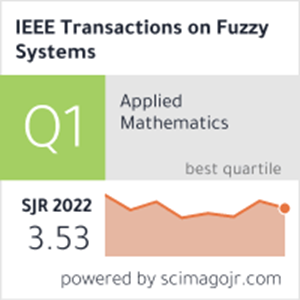基于模糊逻辑的功能近红外光谱预测人类互动的方法
IF 10.7
1区 计算机科学
Q1 COMPUTER SCIENCE, ARTIFICIAL INTELLIGENCE
引用次数: 0
摘要
在本文中,我们介绍了基于模糊逻辑的注意(模糊注意层)机制,这是一种新的计算方法,旨在提高神经模型在心理学研究中的可解释性和有效性。将模糊注意层集成到变压器编码器模型中,利用功能近红外光谱(fNIRS)捕获的神经信号分析复杂的心理现象。通过利用模糊逻辑,模糊注意层学习和识别神经活动的可解释模式。这解决了使用变形器的一个重大挑战:在确定哪些特定的大脑活动最有助于特定的预测方面缺乏透明度。我们从涉及牵手的社会互动的fNIRS数据中获得的实验结果表明,模糊注意层不仅学习了神经活动的可解释模式,而且提高了模型的性能。此外,这些模式为人际接触和情感交流的神经关联提供了更深入的见解。我们的模型的应用在理解人类社会行为的复杂方面显示出巨大的潜力,用机器学习算法验证心理学理论,从而为社会神经科学和人工智能领域做出重大贡献。本文章由计算机程序翻译,如有差异,请以英文原文为准。
A Fuzzy Logic-Based Approach to Predict Human Interaction by Functional Near-Infrared Spectroscopy
In this article, we introduce the Fuzzy logic-based attention (Fuzzy Attention Layer) mechanism, a novel computational approach designed to enhance the interpretability and efficacy of neural models in psychological research. The fuzzy attention layer integrated into the transformer encoder model to analyze complex psychological phenomena from neural signals captured by functional near-infrared spectroscopy (fNIRS). By leveraging fuzzy logic, the fuzzy attention layer learns and identifies interpretable patterns of neural activity. This addresses a significant challenge in using transformers: the lack of transparency in determining which specific brain activities most contribute to particular predictions. Our experimental results, obtained from fNIRS data engaged in social interactions involving handholding, reveal that the fuzzy attention layer not only learns interpretable patterns of neural activity but also enhances model performance. In addition, these patterns provide deeper insights into the neural correlates of interpersonal touch and emotional exchange. The application of our model shows promising potential in understanding the complex aspects of human social behavior, verify psychological theory with machine learning algorithms, thereby contributing significantly to the fields of social neuroscience and AI.
求助全文
通过发布文献求助,成功后即可免费获取论文全文。
去求助
来源期刊

IEEE Transactions on Fuzzy Systems
工程技术-工程:电子与电气
CiteScore
20.50
自引率
13.40%
发文量
517
审稿时长
3.0 months
期刊介绍:
The IEEE Transactions on Fuzzy Systems is a scholarly journal that focuses on the theory, design, and application of fuzzy systems. It aims to publish high-quality technical papers that contribute significant technical knowledge and exploratory developments in the field of fuzzy systems. The journal particularly emphasizes engineering systems and scientific applications. In addition to research articles, the Transactions also includes a letters section featuring current information, comments, and rebuttals related to published papers.
 求助内容:
求助内容: 应助结果提醒方式:
应助结果提醒方式:


